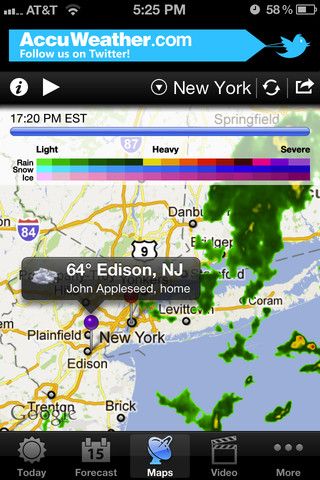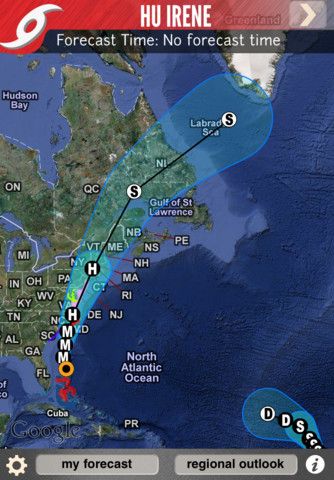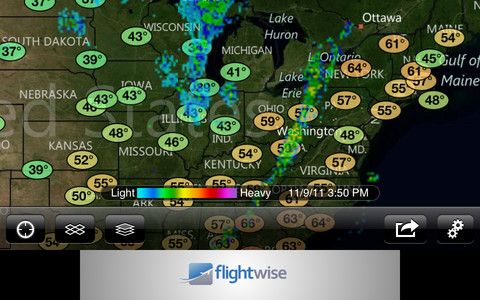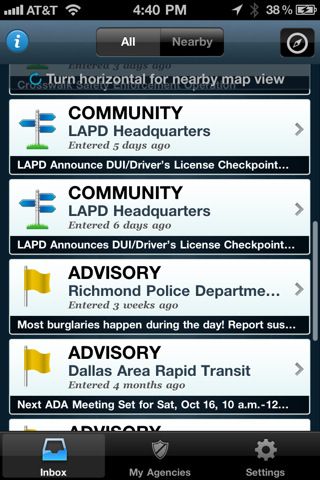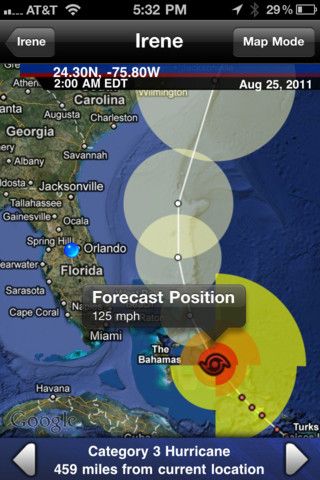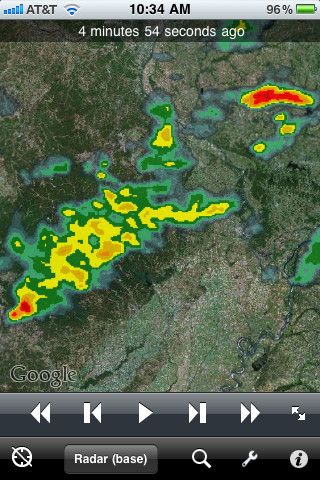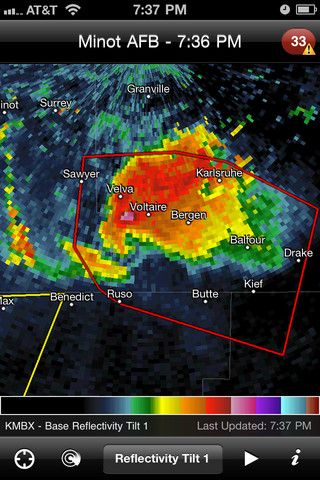Storm chasing might be considered a strange way to spend your weekends, but if it’s isobars and radar images that get you hot under the collar then this line-up of apps for your iOS device is bound to help scratch the itch. The benefits of using an iPhone or 3G iPad whilst out chasing bad weather are fairly obvious. Apple’s devices both provide GPS functionality and access to mapping information in a flash, as well as being connected to the Internet for up-to-date news.
Luckily the App Store is another valuable storm tracking tool, with apps dedicated to weather prediction, storm detection and general meteorology. If you're an Android user though, don’t fret, we’ve got a similar article geared towards your operating system too!
Free
The following apps won’t cost you a penny, and whilst they lack many of the features seen in paid releases, they can still provide you with a lot of information when you’re out chasing, including forecasts, alerts and radar data.
AccuWeather For iPhone
Probably the best general all-round weather app for iOS, AccuWeather for iPhone provides you with quick access to detailed weather reports. After detecting your location, the app then returns the appropriate conditions, predictions and weather data for your locale.
For the serious meteorologist there’s Notification Center support as well as the option of adding the next 15 days worth of weather to your in-built Calendar. Forecasts are updated every hour, and there is even in-built support for weather warnings (including tornadoes for your storm chasers out there).
For a free all-round storm tracking app that’s bound to suit everyone, you can’t go far wrong with AccuWeather for iPhone.
Hurricane Forecaster [No Longer Available]
If you’re after a simple, free hurricane tracking app then you might just have found it with Hurricane Forecaster. The app description is pretty honest, and claims to do the job "without being bogged down with unnecessary features".
Scraping data from the US National Hurricane Center, the app can predict the risk of hurricane-speed winds at your location, tracking data for storms, push notifications when a storm becomes a hurricane and a 48-hour regional forecast which includes the likelihood of a storm developing.
This is one app that’s useful for both storm chasers and those living in areas prone to tropical storms.
MyRadar Weather Radar
For a simple, free, no-frills radar app then look no further than MyRadar Weather Radar. OK, so it’s certainly not the nicest app to look at and unless you purchase the $1.99 upgrade you’ll have to stare at an advert but it does exactly what it says and doesn’t cost a cent.
Storm chasing seems to be very much an American thing, so it’s unlikely to disappoint that this one only provides data for those in the main 48 US states (sorry Alaska and Hawaii). The app puts weather data on a pinch-to-zoom map with animations that should hopefully let you know how fast that storm is heading your way.
Nixle [No Longer Available]
This one’s not a weather app, but an alert app that allows you to opt into alerts from over 4,600 municipal authorities in the United States. That includes weather alerts as well as the usual police, sheriff and fire departments.
Alerts can be viewed in list or map view and the app has been written to take advantage of the Retina display introduced with the iPhone 4. Interestingly the app also claims not to use GPS in the background, saving you valuable battery while you’re out and about.
Paid
The following apps provide extended functionality and additional features, albeit for a price.
Hurricane (for iPhone) & Hurricane HD (for iPad) $3.99
This app comes with everything you’d expect from the self-professed "ultimate hurricane tracking application" for iOS. As well as detailed video reports from HurricaneTrack.com there’s full Twitter integration and push notifications to keep you abreast of the weather.
Also included is a detailed map for tracking your chosen storm which includes a forecast cone and wind speed information, making this a highly capable app for a fairly low price.
NOAA Radar US $1.99
NOAA stands for National Oceanic and Atmospheric Administration and makes up part of the United States Department of Commerce. NOAA’s radar data is a valuable resource in any meteorological pursuit, and this app claims to be the fastest at delivering it.
As well as severe weather warning alerts there’s detailed satellite imagery with cloud cover data, multiple radar layers, different map types and all manner of customizable options. The NOAA Radar US app provides detailed weather information for those who know what to do with it without breaking the bank.
Radarscope $9.99
The final app on our list is probably the most serious of all, and believe me I’m not joking when I say you’ll probably need a decent grounding in radar imagery and meteorology in order to make use of it.
Radarscope supports all US states and territories, including Alaska, Hawaii and Guam (many free alternatives omit these areas) in serious detail thanks to advanced NEXRAD Level 3 radar imagery. Radarscope will help you determine precipitation data, the speed at which a storm is moving and provides access to NOAA feeds.
This is one app that favours detail over speed, and this is the main difference between Radarscope and NOAA Radar US, above. That and the price of course!
Conclusion
If you absolutely must choose to spend your Sunday afternoons chasing developing weather systems across America’s sunnier states then please do stay safe. Here’s a basic free first aid app to help you out if anything goes wrong. If you’re travelling in a car don’t forget your in-car charger, as a flat battery in an emergency situation isn’t ideal.
Above all, have fun and don’t endanger yourself or others unnecessarily. The emergency services could probably do without it during windy season.
Do you have any other awesome storm tracking apps you rely on? How about other services? Any other websites, safety resources or photo galleries we should be checking out? Have a say in the comments, below this article.
Image Credit: Shutterstock


